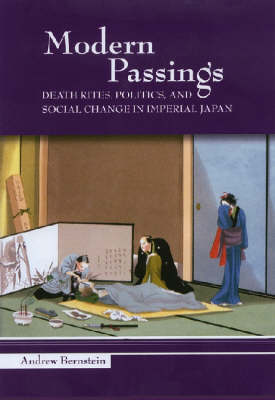Studies of the Weatherhead East Asian Institute, Columbia University
1 total work
In Imperial Japan, as elsewhere in the modernizing world, funerals, burials, and other mortuary rites had developed over the centuries with the aim of building continuity in the face of loss. As the Japanese coped with the economic, political, and social changes that radically remade their lives in the decades after the Meiji Restoration (1868), they clung to local customs and Buddhist rituals such as sutra readings and incense offerings that for generations had given meaning to death. Yet death, as this highly original study shows, was not impervious to nationalism, capitalism, and the other isms that constituted and still constitute modernity. As Japan changed, so did its handling of the inevitable. Following an overview of the early development of funerary rituals in Japan, Andrew Bernstein demonstrates how diverse premodern practices from different regions and social strata were homogenized with those generated by middle-class city dwellers to create the form of funerary practice dominant today. He also explores the conflict-filled process of remaking burial practices, which gave rise, in part, to the suburban ""soul parks"" now prevalent throughout Japan; the (largely failed) attempt by nativists to replace Buddhist death rites with Shinto ones; and the rise and fall of the funeral procession.
